Woods
Amboyna
Often confused with Thuya wood or Burr Walnut, Amboyna is a profusely burred wood that is a part of the Pterocarpus genus, most commonly obtained from the Narra Tree (Pterocarpus indicus), and is native to Southeastern Asia, Northern Australasia, and the Western Pacific Ocean islands. The name Amboyna is derived from the Ambon Islands in Indonesia, where it is believed that this wood was first sourced and exported.
Due to its attractive figuring, Amboyna is a particularly rare and desirable wood for furniture and box manufacturing; within a single piece, its figuring can be quite diverse, from tight clusters of burrs to lighter, flowing and rippled areas that appear almost three-dimensional. Amboyna’s colour characteristics can range from a yellowy-honey colour to an almost reddish Mahogany colour.
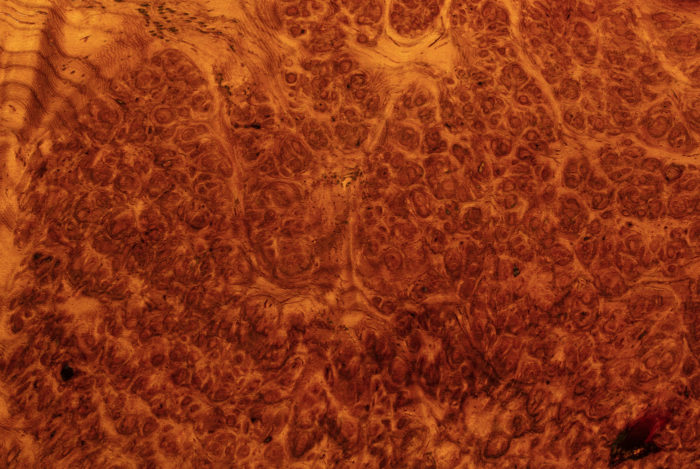
Amboyna veneer from an antique jewellery box.
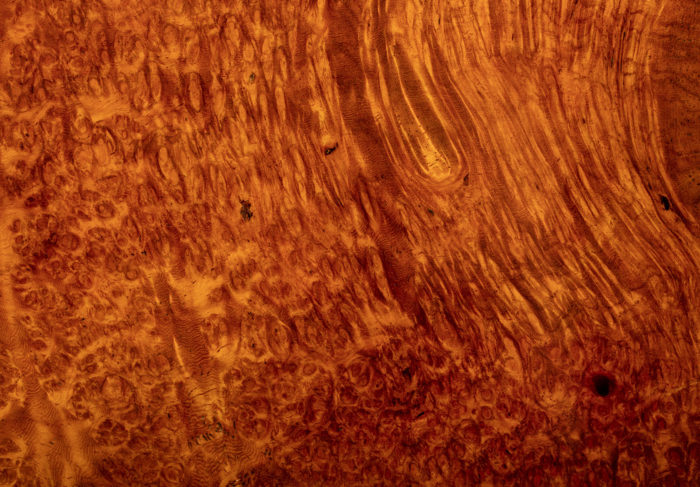
Amboyna veneer from an antique jewellery box.
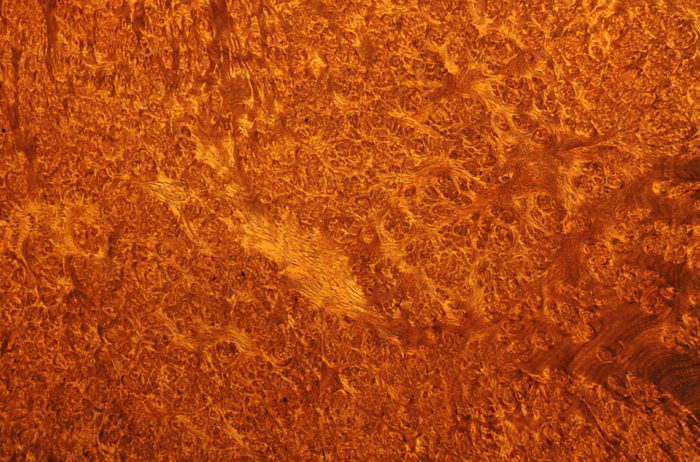
Amboyna veneer from an antique jewellery box by Howell, James & Co.
Thuya Wood
Thuya wood usually ranges in colour from a golden brown to a medium reddish brown. It has a characteristic three dimensional light and shade patterned appearance, accompanied by a multitude of small dark ‘eye’ formations. READ MORE
Ebony
Ebony is a very dense, dark wood that can vary from a dark brown to a black colour. Its species can be found in and around India, Africa and South East Asia. READ MORE
Veneer
Veneer is a thin slice of wood, often about 1-2mm thick, that is glued onto another piece of solid core wood, for decorative purposes. READ MORE
Walnut and Burr Walnut
The varieties of Walnut wood have been used in furniture making for many centuries. Walnut veneer was highly priced, with the cost reflecting the ‘fanciness’ of the veneer – the more decorative, then the more expensive and desirable. Figured Walnut and Burr Walnut (sometimes referred to as Burl Walnut) were considered as the most attractive varieties of Walnut. READ MORE
Mahogany
Native of the Americas, India and South East Asia, Mahogany is probably one of the largest ‘families’ of hardwood, having many different varieties within its own species.
Mahogany has been used for centuries in ship building, house building, furniture making etc and is the core structure of most 19th century boxes. The denseness, resilience and strength of Mahogany made it the perfect surface to adhere the exotic veneers to. READ MORE
Rosewood
Rosewood is a rich warm reddish brown wood that has a distinct grain with dark brown and black outlining. One variety of Rosewood can vary significantly from another even though it is of the same species. These Rosewoods, native of India, South East Asia and Brazil, were dense and awkward to work with. READ MORE
Kingwood
Often confused with Rosewood, this lighter, more orangey wood from the same species can share a lot of similar aesthetic attributes to Rosewood. It has a defined grain with darker brown and black patterned outlines contrasting against a lighter background. READ MORE
Satinwood
Whilst very few Victorian boxes were ever fully veneered in Satinwood, box makers often used this opulent and expensive wood to decorate or ‘accent’ areas of the box’s interior instead. Satinwood (Ceylon Satinwood) is a native of Southern India and Sri Lanka and has an illuminating, shimmery yellow/ gold appearance. READ MORE
Coromandel
During the reign of Queen Victoria, Coromandel was considered one of the most exotic, luxurious and expensive woods to work with and it was the veneer of choice for some of the finest boxes. READ MORE
Calamander
Calamander wood is a very close relation to Coromandel and is also a native of India and South East Asia. Like Coromandel, it is a dense, close-grained wood, but tends to be more striped and consistent in appearance, being very similar to what we know today as Macassar Ebony. READ MORE
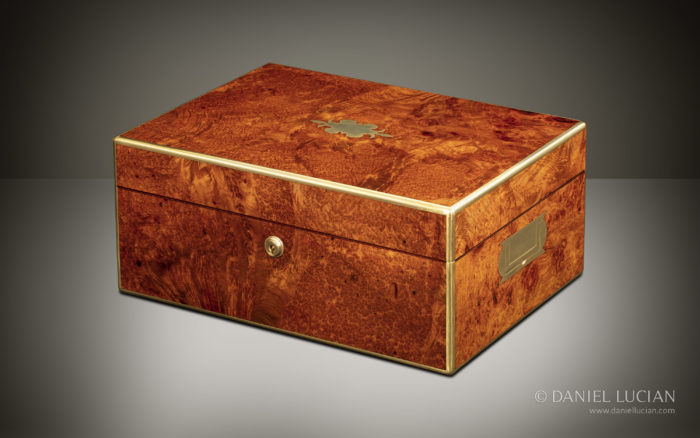
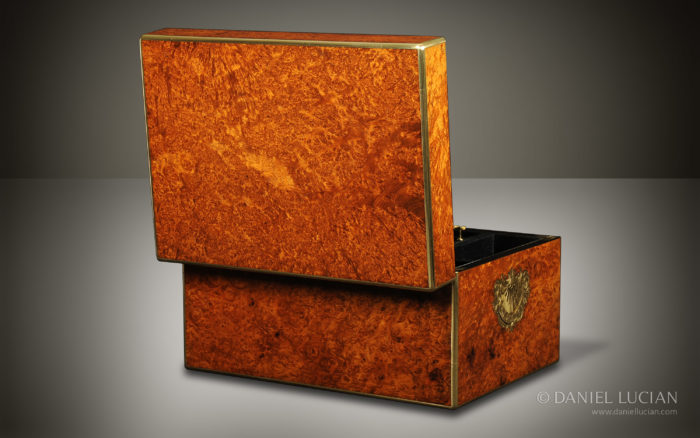
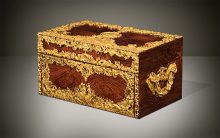 Price On Application
Price On Application